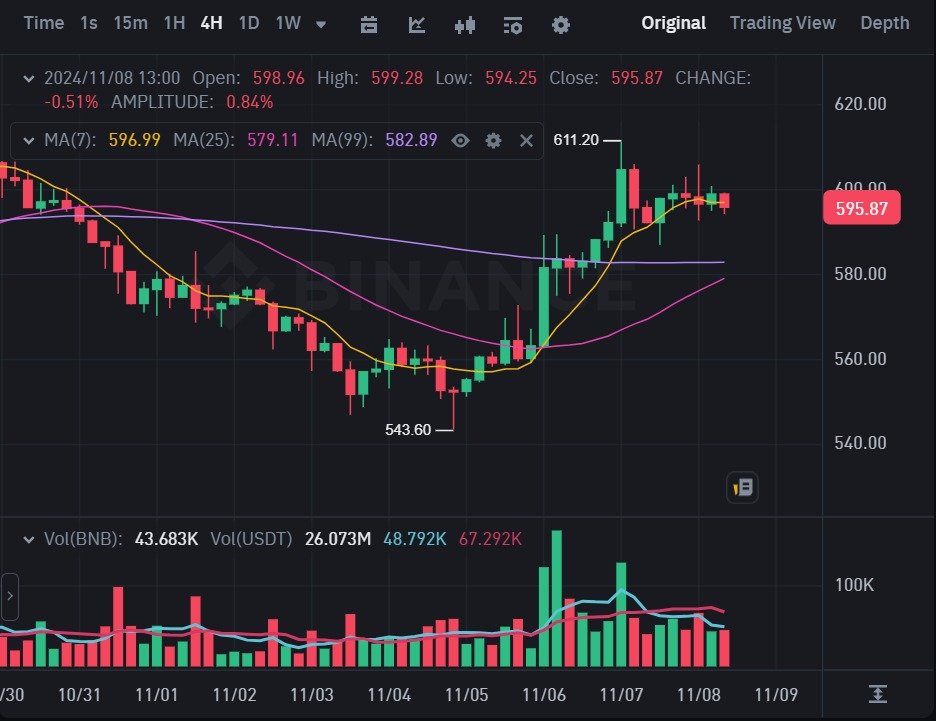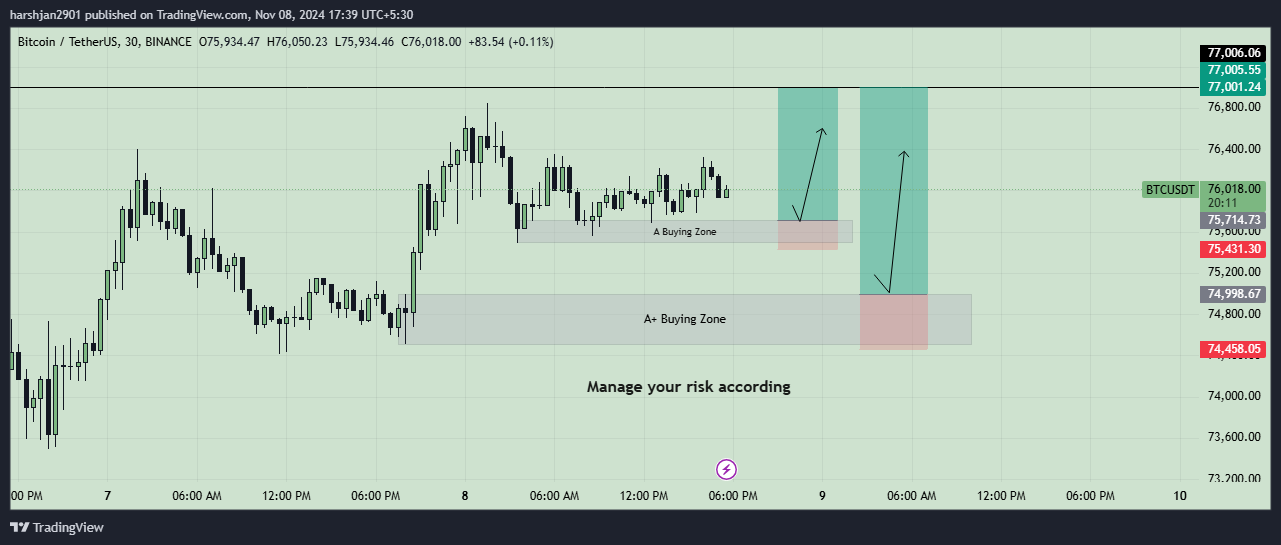In 2025, the US regulatory environment for crypto funds has become more transparent, fostering increased trust and participation. Regulatory clarity from bodies like the SEC has paved the way for innovation, encouraging institutions to launch cryptocurrency exchange-traded funds (ETFs) and specialized funds catering to various investment needs.
Introduction to Crypto Investment Funds in the US in 2025
Cryptocurrency investment funds have emerged as a mainstream financial tool in the US, capturing the attention of seasoned investors and newcomers alike. In 2025, these funds are revolutionizing the investment landscape by offering diversified exposure to the rapidly evolving world of digital assets.
Unlike traditional investments, crypto funds provide a gateway to blockchain-based assets like Bitcoin, Ethereum, and altcoins while minimizing the complexities of individual asset management. With professional fund managers at the helm, investors gain access to expert strategies, portfolio diversification, and risk mitigation techniques.
The integration of blockchain technology into traditional financial markets has also enhanced security and transparency, further solidifying investor confidence. Additionally, the increasing adoption of decentralized finance (DeFi) protocols is creating new opportunities for crypto funds to generate high yields.
For investors, crypto funds offer an efficient way to participate in the digital economy without requiring extensive technical knowledge. Whether focusing on long-term growth, income generation, or exposure to cutting-edge blockchain technologies, these funds cater to diverse financial goals.
As the US continues to lead in fintech innovation, crypto investment funds are set to play a pivotal role in reshaping wealth creation. By merging traditional finance principles with the transformative potential of blockchain, these funds present an exciting avenue for those looking to capitalize on the future of finance.
- Context and Importance
The world of crypto investment funds has seen explosive growth over the past decade, driven by increasing institutional adoption and growing public interest in digital assets. As cryptocurrencies continue to redefine the financial landscape, crypto investment funds have emerged as a popular vehicle for diversifying portfolios and accessing this rapidly evolving asset class.
In 2025, understanding the regulatory environment surrounding crypto investment funds is more critical than ever. With governments and financial authorities worldwide implementing new frameworks to address the unique risks and opportunities posed by digital assets, investors and fund managers alike must stay informed to navigate this dynamic space effectively.
- Objectives of the Blog
This blog aims to provide readers with a comprehensive understanding of the latest regulatory updates impacting crypto investment funds in 2025. It will explore key challenges, such as compliance with evolving legal frameworks, and highlight the opportunities these regulations create for innovation and growth. By the end of this blog, readers will be better equipped to make informed decisions, mitigate risks, and capitalize on the expanding potential of crypto investments in a regulated environment.
Evolution of Crypto Fund Regulations in the US
The journey of cryptocurrency regulation in the U.S. has been transformative. Early attitudes toward crypto in financial markets were characterized by skepticism and uncertainty. Bitcoin’s emergence in 2009 drew little attention from regulators until its popularity surged in the early 2010s. The lack of oversight during this period fostered innovation but also raised concerns about fraud and misuse.
The 2017 Initial Coin Offering (ICO) boom marked a turning point. The Securities and Exchange Commission (SEC) began scrutinizing ICOs, classifying many as unregistered securities, leading to enforcement actions. The introduction of Bitcoin futures on CME and CBOE in the same year was a milestone, signaling growing institutional interest. Early exchange-traded fund (ETF) applications, however, faced repeated SEC rejections due to concerns over market manipulation and insufficient investor protections.
Key Legislative and Regulatory Milestones
Over time, U.S. lawmakers and regulators introduced significant measures to address crypto market challenges. The Token Taxonomy Act, proposed in 2018, aimed to clarify the regulatory classification of digital assets, though it did not pass. More impactful was the Financial Action Task Force (FATF) guidance in 2019, which led to enhanced Know Your Customer (KYC) and Anti-Money Laundering (AML) standards for crypto firms.
Regulatory responses to major market events have also shaped the landscape. The collapse of FTX in 2022 prompted calls for stricter oversight of crypto exchanges, leading to proposals for exchange registration and reserve audits. Stablecoin crises, such as TerraUSD’s de-pegging, spurred legislative discussions around stablecoin issuance and transparency.
The regulatory framework continues to evolve, balancing innovation with investor protection, and setting the stage for a more structured and accountable crypto market.
Key Regulatory Bodies and Their Roles
- The Securities and Exchange Commission (SEC): The Securities and Exchange Commission (SEC) plays a pivotal role in the regulation of cryptocurrencies, primarily focusing on those classified as securities. The SEC evaluates whether a digital asset meets the criteria of an “investment contract” under the Howey Test, which determines if an asset involves an investment of money, in a common enterprise, with an expectation of profits derived from others’ efforts. This classification allows the SEC to oversee initial coin offerings (ICOs) and ensure compliance with securities laws to protect investors.
Additionally, the SEC regulates cryptocurrency exchange-traded funds (ETFs) and mutual funds, which aim to provide institutional and retail investors with exposure to the crypto market. This oversight ensures transparency, fair trading practices, and adherence to investor protection standards.
- The Commodity Futures Trading Commission (CFTC): The Commodity Futures Trading Commission (CFTC) classifies certain cryptocurrencies, such as Bitcoin and Ethereum, as commodities. This classification grants the CFTC authority to regulate cryptocurrency derivatives, including futures and options contracts. The agency focuses on mitigating fraud, manipulation, and systemic risks in the derivatives market. By overseeing trading platforms and market participants, the CFTC enhances market integrity and fosters confidence in cryptocurrency-based financial instruments.
- Other Federal and State Authorities: Financial Crimes Enforcement Network (FinCEN): FinCEN combats illicit activities such as money laundering and terrorist financing in the crypto space. It mandates compliance with anti-money laundering (AML) regulations and requires crypto exchanges to report suspicious activities.
- State-Level Regulations: States like New York have introduced frameworks such as the BitLicense, which sets rigorous compliance requirements for crypto businesses. These include financial disclosures, cybersecurity standards, and anti-fraud measures, ensuring local regulatory oversight complements federal efforts.
Together, these regulatory bodies shape a comprehensive framework for crypto governance, balancing innovation with investor protection.
Major Regulatory Developments in 2025
- Key Updates in Federal Legislation
2025 has seen a transformative shift in federal legislation impacting the cryptocurrency sector. Congress has passed several crypto-focused bills aimed at establishing clarity in the rapidly evolving digital asset landscape. Notably, the “Digital Asset Regulatory Clarity Act” now provides clear distinctions between cryptocurrencies considered securities versus commodities, directly influencing how crypto funds operate. Additionally, amendments to existing securities laws have imposed stricter compliance requirements on crypto investment funds, aiming to enhance investor protection. - SEC and CFTC Coordination
A significant milestone in 2025 has been the improved coordination between the Securities and Exchange Commission (SEC) and the Commodity Futures Trading Commission (CFTC). These agencies have made substantial progress in defining their jurisdictional boundaries, reducing overlapping oversight and regulatory ambiguity. A collaborative framework, the “Joint Oversight Initiative,” now facilitates seamless sharing of information, enabling more effective monitoring of fraudulent activities and market manipulation within the cryptocurrency ecosystem. - Updates to Tax and Reporting Requirements
Tax and reporting regulations for cryptocurrency investments have undergone major updates this year. The IRS introduced revised capital gains tax rules, imposing variable tax rates based on the duration of asset holding. Short-term investors face higher rates, incentivizing long-term holdings. Furthermore, enhanced reporting requirements mandate that individuals and entities report all crypto transactions exceeding $600, with digital platforms required to submit detailed transaction reports directly to the IRS. These changes aim to close tax loopholes and increase transparency in the market.
With these developments, 2025 is shaping up as a pivotal year for the global crypto industry, emphasizing regulatory clarity, improved oversight, and robust compliance mechanisms.

Challenges Facing Crypto Investment Funds
Crypto investment funds face several challenges that can significantly influence their operations and profitability. Below are some of the key hurdles in this dynamic sector:
- Regulatory Uncertainty
The classification of certain crypto assets remains ambiguous, making it difficult for funds to operate confidently within existing legal frameworks. The lack of regulatory clarity often results in delays in critical decisions, impacting the ability of funds to expand and innovate. Additionally, inconsistent global standards further complicate cross-border operations, leaving investors and fund managers exposed to potential legal pitfalls. - Compliance and Operational Costs
Compliance with evolving regulatory requirements imposes significant financial and administrative burdens. Crypto funds must invest heavily in obtaining licenses, adhering to anti-money laundering (AML) protocols, and meeting Know Your Customer (KYC) standards. These costs are further amplified when funds operate in multiple jurisdictions, as each state or country may impose its unique set of requirements. The complexity of navigating these regulations can deter smaller funds from entering the market. - Market Risks
Crypto markets are notoriously volatile, with prices often subject to dramatic fluctuations influenced by market sentiment, technological developments, and macroeconomic factors. For funds, this volatility presents both opportunities and significant risks. Legal risks also loom large, as enforcement actions against specific tokens or platforms can result in the devaluation of assets or operational constraints. Funds must continuously balance these risks while striving to deliver returns to their investors.
In conclusion, while crypto investment funds hold immense potential, they must navigate a landscape riddled with regulatory, operational, and market challenges. Successfully addressing these issues will require adaptive strategies and a proactive approach to risk management.
Opportunities for Crypto Investment Funds
The rapidly evolving landscape of crypto investment funds presents numerous opportunities for growth and innovation. As digital assets gain wider acceptance, investment funds in this sector are poised to benefit from several key trends.
- Increased Institutional Adoption
Institutional adoption of cryptocurrencies is gaining momentum, driven by positive regulatory developments that enhance investor confidence. Regulatory clarity in major markets is encouraging the creation of exchange-traded funds (ETFs) and crypto trusts, offering institutional players secure and regulated investment vehicles. This trend is further supported by the entry of traditional financial institutions into the crypto space, which is helping to bridge the gap between traditional and digital finance. - Innovation in Fund Structures
Advancements in technology and financial products are reshaping crypto investment funds. Tokenized funds, which fractionalize ownership through blockchain, are democratizing access to high-value investments. Similarly, DeFi-powered investment platforms offer innovative mechanisms for yield generation, leveraging smart contracts to automate and optimize returns. Regulatory bodies are also beginning to recognize hybrid investment products, combining crypto and traditional assets, further expanding the scope for fund managers. - Global Collaboration
Globalization is unlocking new opportunities for cross-border crypto investments. Efforts to align regulations with international standards are easing barriers to entry and enabling seamless transactions across jurisdictions. Collaborative initiatives between the U.S. and global regulators are fostering a unified approach, reducing compliance complexities for multinational funds and attracting a broader investor base.
By capitalizing on these trends, crypto investment funds can position themselves as pioneers in the digital finance revolution, unlocking long-term value for investors worldwide.
Case Studies and Industry Insights
- High-Profile Regulatory Approvals in 2025
The crypto landscape witnessed a significant milestone in 2025 when a high-profile crypto exchange-traded fund (ETF) gained SEC approval. This approval marked a turning point for institutional adoption, signaling the U.S. regulators’ willingness to embrace cryptocurrency within a structured framework. The ETF’s approval followed rigorous compliance with stringent SEC requirements, including robust custody solutions, transparent fund management practices, and enhanced investor protections.
Another notable success story emerged from a leading U.S.-based crypto fund, which achieved full compliance through proactive engagement with regulators. By implementing advanced Know Your Customer (KYC) and Anti-Money Laundering (AML) systems, the fund not only avoided regulatory pitfalls but also built investor trust, setting a benchmark for the industry. These examples underscore the importance of alignment with regulatory standards to unlock growth and acceptance in traditional financial markets.
- Lessons from Enforcement Actions
Recent enforcement actions by the SEC and the Commodity Futures Trading Commission (CFTC) provided critical insights into regulatory expectations. In a high-profile case, the SEC penalized a major crypto firm for failing to register its token offerings as securities. This highlighted the importance of conducting thorough Howey Test analyses before launching crypto assets.
Similarly, the CFTC’s crackdown on unregistered crypto derivatives platforms emphasized the necessity of adhering to commodity trading laws. Key takeaways include the need for robust compliance frameworks, transparent reporting, and proactive legal consultations. These cases serve as cautionary tales, illustrating that while innovation drives the crypto industry, adherence to regulatory standards is non-negotiable for sustainable success.
The evolving crypto regulatory landscape offers both opportunities and challenges, with compliance remaining a critical determinant of long-term industry growth.
What Lies Ahead for Crypto Funds
As we look to 2026 and beyond, the future of cryptocurrency funds appears poised for significant growth and transformation. The evolving regulatory landscape will play a crucial role in shaping the industry. Regulatory developments are expected to intensify, with stricter compliance frameworks being implemented to safeguard investors while encouraging responsible innovation. Governments worldwide are focusing on striking a balance between supporting the growth of blockchain technologies and preventing illicit activities such as money laundering and fraud.
A key focus area will be the rise of CBDCs (Central Bank Digital Currencies). These digital currencies, issued and regulated by central banks, could profoundly influence the cryptocurrency market. CBDCs are likely to coexist with private cryptocurrencies, but their widespread adoption may drive more traditional investors to enter the digital asset space. Their integration into financial systems will also pave the way for smoother cross-border transactions and greater financial inclusion, creating new opportunities for crypto funds.
In addition to regulatory advancements, calls for regulatory harmonization will become more prominent. The fragmented regulatory landscape across different regions has long been a challenge for global crypto funds. To foster innovation, clearer and more unified rules are needed that provide global standards while respecting local regulatory frameworks. Industry participants, including crypto funds, will benefit from greater regulatory clarity, enabling more effective risk management and the ability to scale operations across borders.
Collaboration between industry leaders and regulators will be key to achieving this harmony. By working together, these stakeholders can craft regulations that encourage innovation while ensuring market stability and consumer protection. This cooperative approach could help build trust in the crypto ecosystem, allowing for smoother integration of digital assets into traditional financial systems.
Overall, the next few years will bring both challenges and opportunities for crypto funds. From navigating evolving regulations to leveraging the benefits of CBDCs, these funds must be adaptable and proactive in their strategies to thrive in an increasingly complex and dynamic global crypto landscape.
Must Read: Why Choose Expert Traders for Your Crypto Investment?
Conclusion
2025 has been a pivotal year for the global regulatory landscape, marked by significant shifts aimed at adapting to evolving market dynamics. Major regulatory changes this year have focused on addressing transparency, sustainability, and risk management, with a strong emphasis on enhancing investor protection while still fostering innovation across financial markets.
One of the key themes has been the balance between encouraging technological advancements and ensuring investor safety. As emerging technologies like blockchain and AI continue to reshape the financial landscape, regulators have stepped in to create frameworks that prevent exploitation while allowing legitimate innovation to thrive. These changes, though necessary, have led to increased complexity in compliance, demanding that both fund managers and investors remain vigilant and proactive in their approach.
For fund managers, it’s essential to stay ahead of these regulatory shifts. By understanding the nuances of new compliance measures, they can ensure their strategies align with both current rules and future projections. Investors, too, must adopt a more adaptive mindset, seeking out platforms and managers who prioritize transparency, risk management, and ethical practices.
At Lumina Lore, we understand the importance of staying informed and agile in this ever-changing regulatory environment. We invite fund managers and investors alike to explore our platform, where cutting-edge tools and resources empower you to navigate market complexities with confidence.
We encourage all financial professionals to keep up-to-date with regulatory news and adapt their strategies accordingly. Staying informed is crucial to maintaining a competitive edge and protecting investments.
For more insights and to stay connected, visit Lumina Lore at https://luminalore.com or reach us at +61488875604. Let’s work together to ensure your investment strategies remain aligned with global best practices.




